The Pafos Archaeological Park in Nea Paphos offers visitors a glimpse into ancient civilizations through its historical monuments, stunning mosaics, and ancient structures such as the Pafos Odeon amphitheater and the Agora. With ongoing preservation efforts, this UNESCO World Heritage Site remains a testament to Cyprus’s rich cultural heritage.
What can visitors expect to see at the Pafos Archaeological Park?
Visitors to the Pafos Archaeological Park can expect to see a variety of historical monuments tracing back to prehistoric times, stunning mosaics depicting Greek mythology, the ancient Pafos Odeon amphitheater, the Agora, the healing sanctuary of Asklepieion, and remnants of the Saranta Kolones castle. Additionally, the park houses the grand House of Theseus and the elaborate House of Dionysos, showcasing extensive mosaics. With ongoing preservation efforts, this UNESCO site remains a testament to Cyprus’s rich cultural heritage.

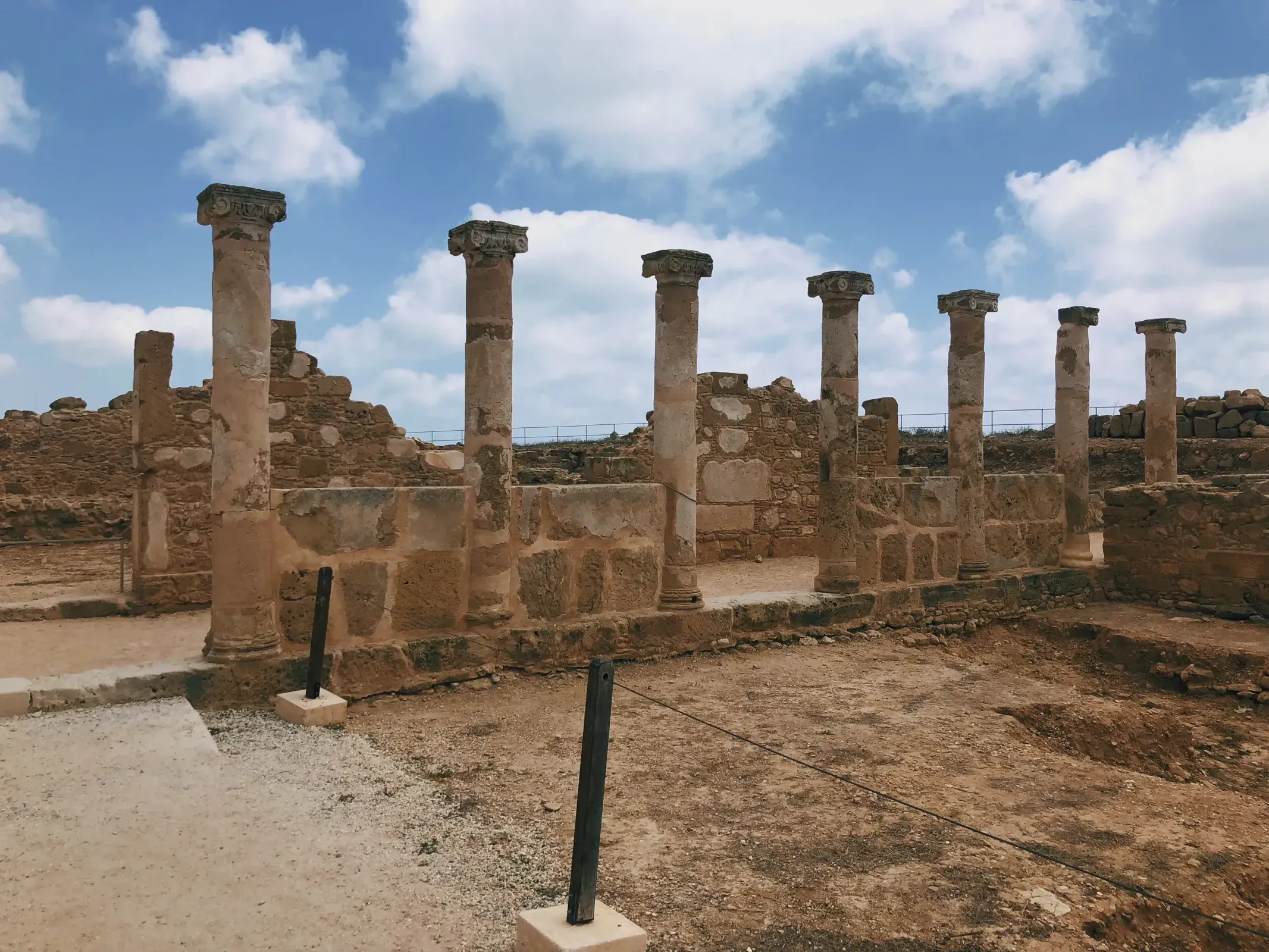
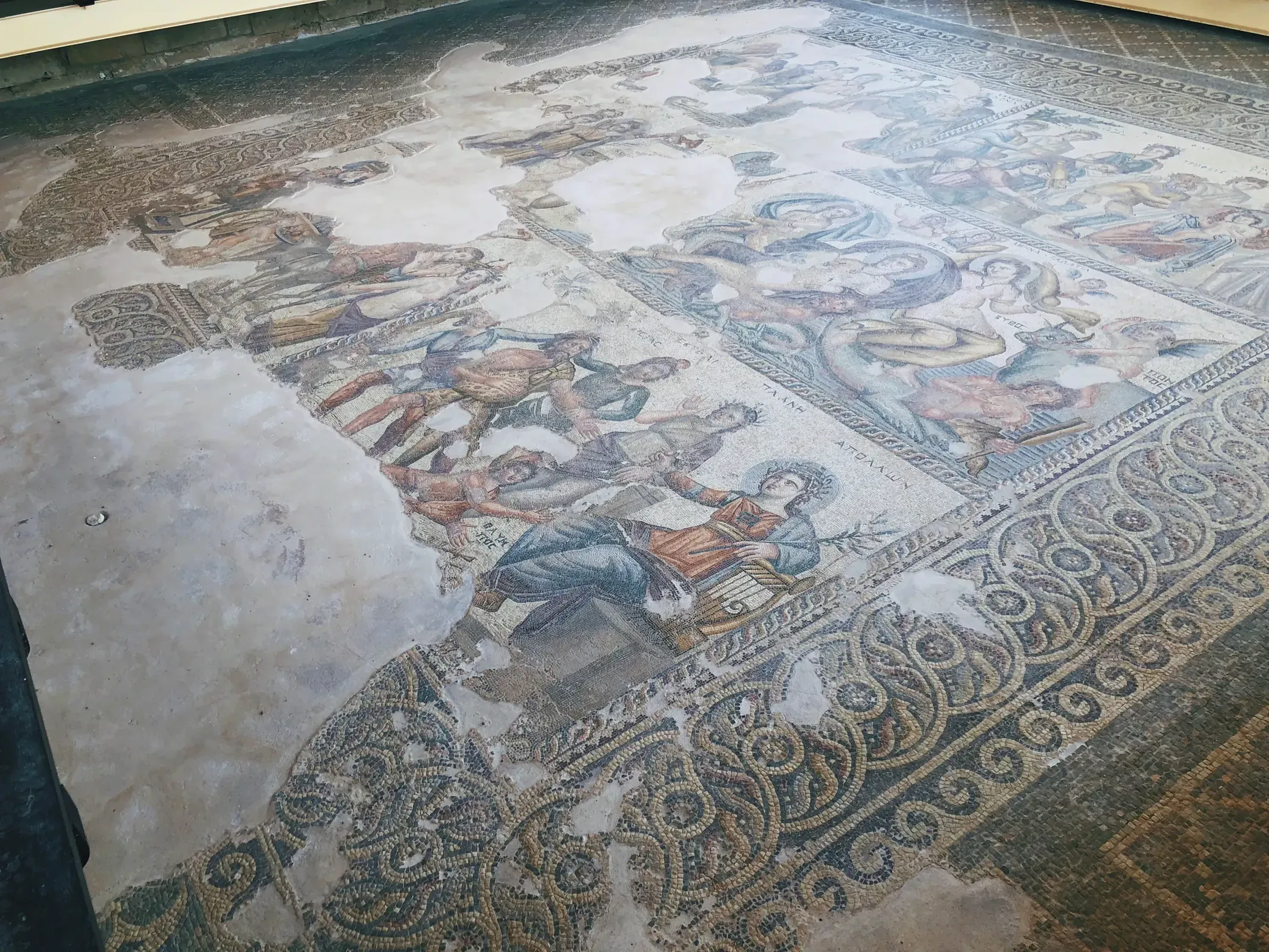
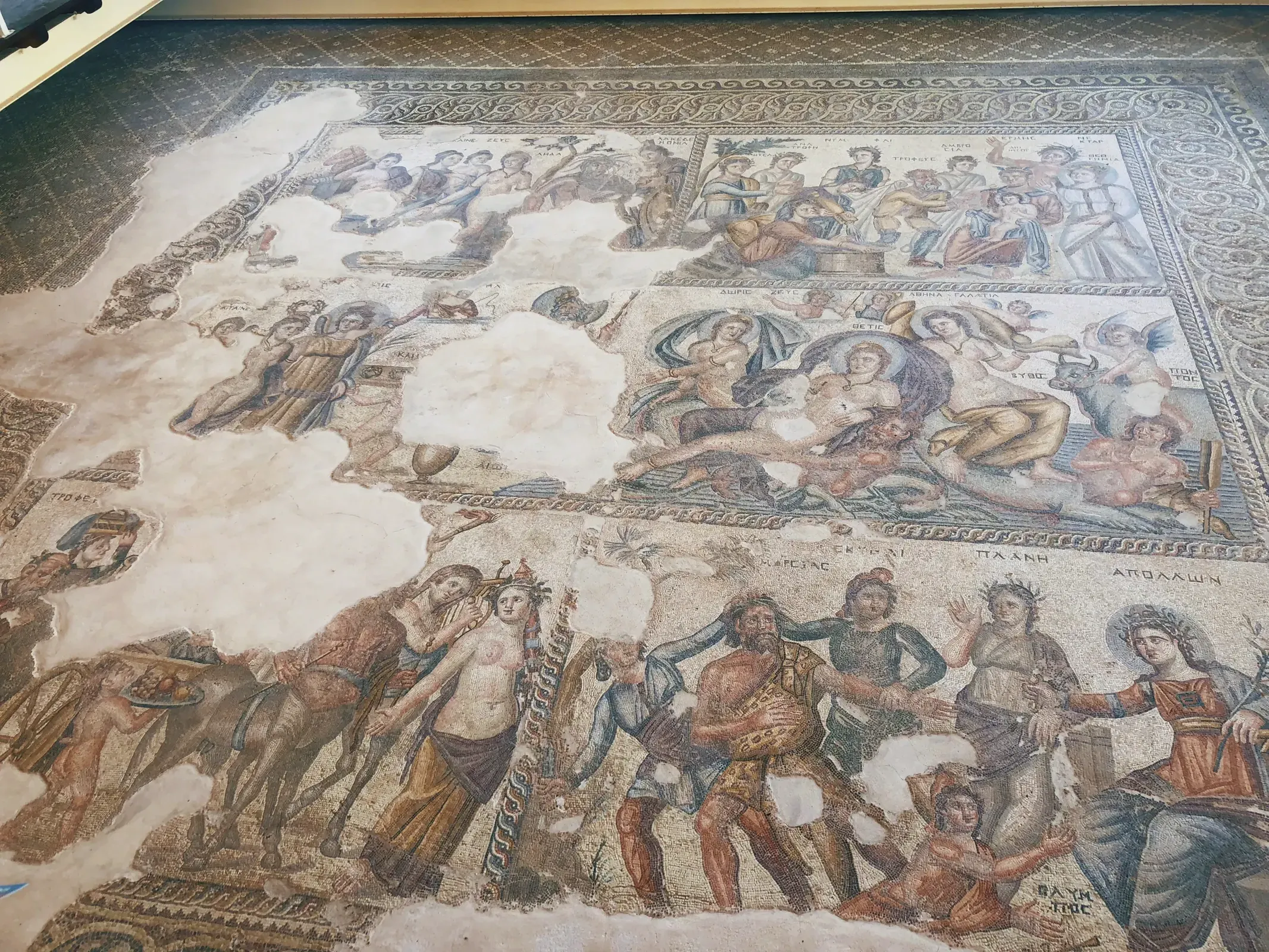
A Glimpse into the Past: Pafos Archaeological Park (UNESCO)
Nestled near the bustling Pafos Harbour in Kato Pafos, the Pafos Archaeological Park is a treasure trove of history, offering a window into civilizations that shaped the culture of ancient Cyprus. This UNESCO World Heritage Site boasts an array of monuments that trace their origins to prehistoric times, the Middle Ages, and the Roman period. With opening hours accommodating visitors year-round and an entrance fee of merely €4.50, the park is a must-visit destination for history buffs and casual explorers alike.
While the park is partly accessible to wheelchairs, visitors should note that the route is not marked, and on-site staff can provide directions. It’s always a good idea to confirm opening hours and any potential changes in entrance fees before planning a visit.
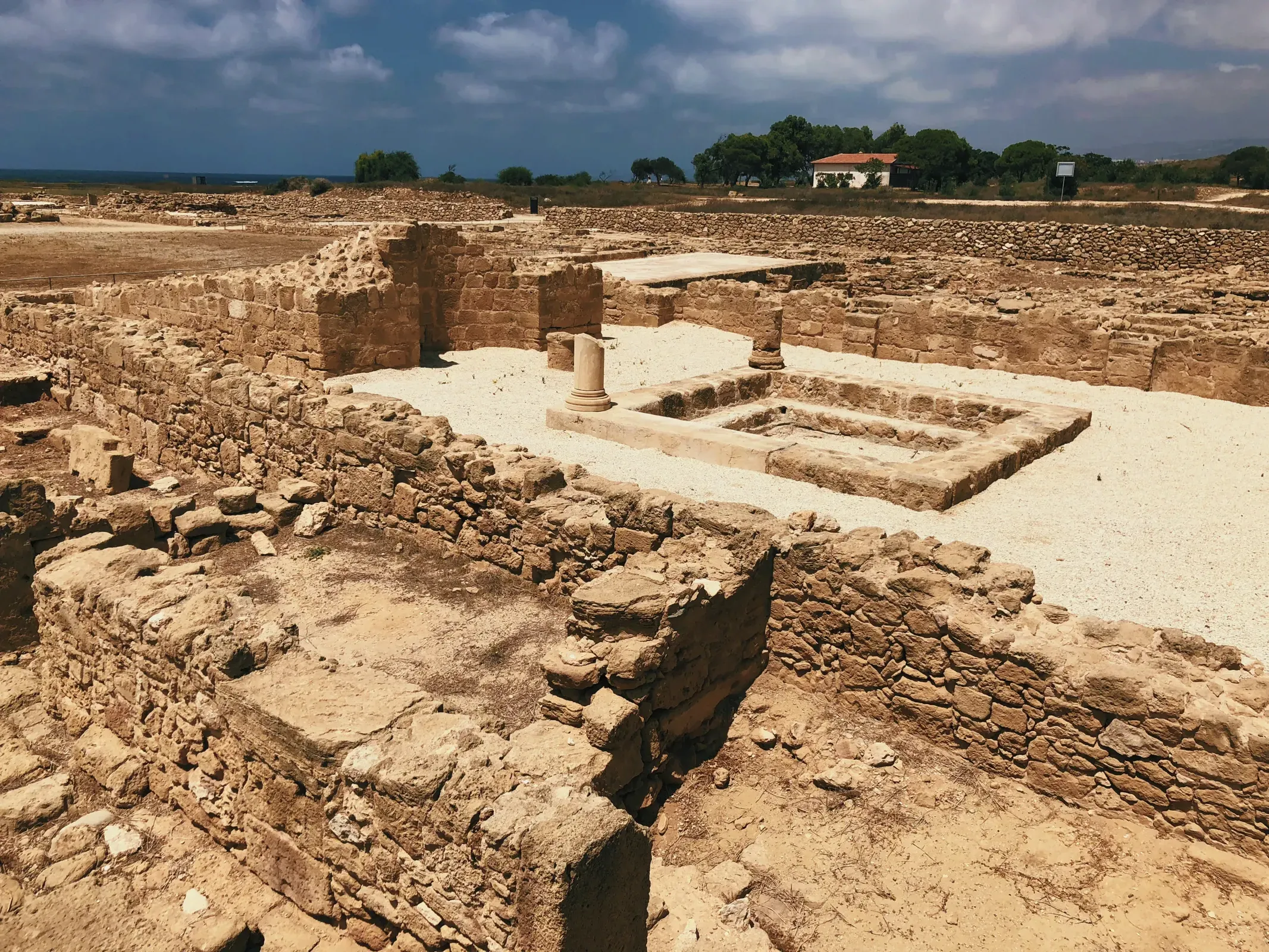
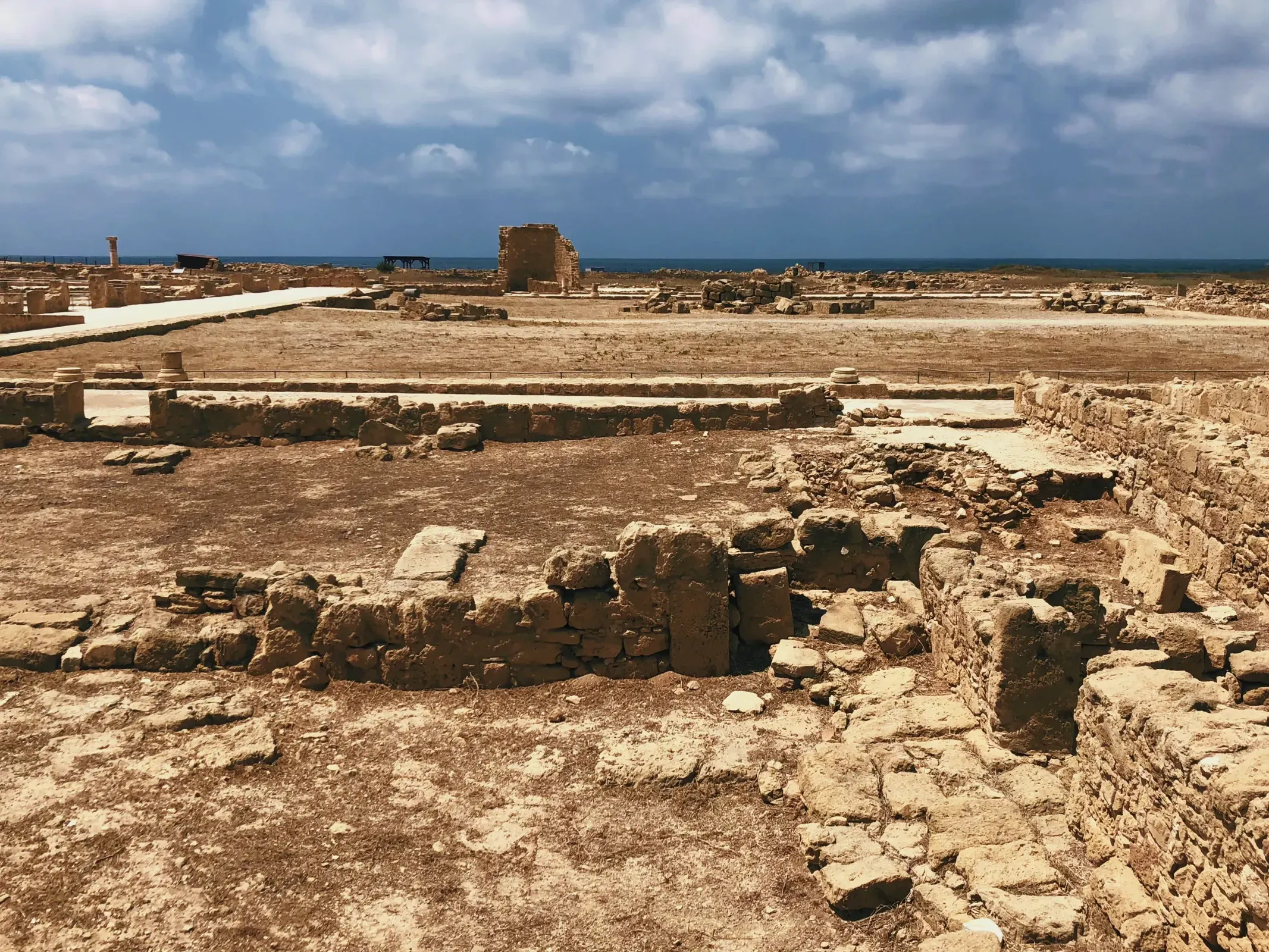
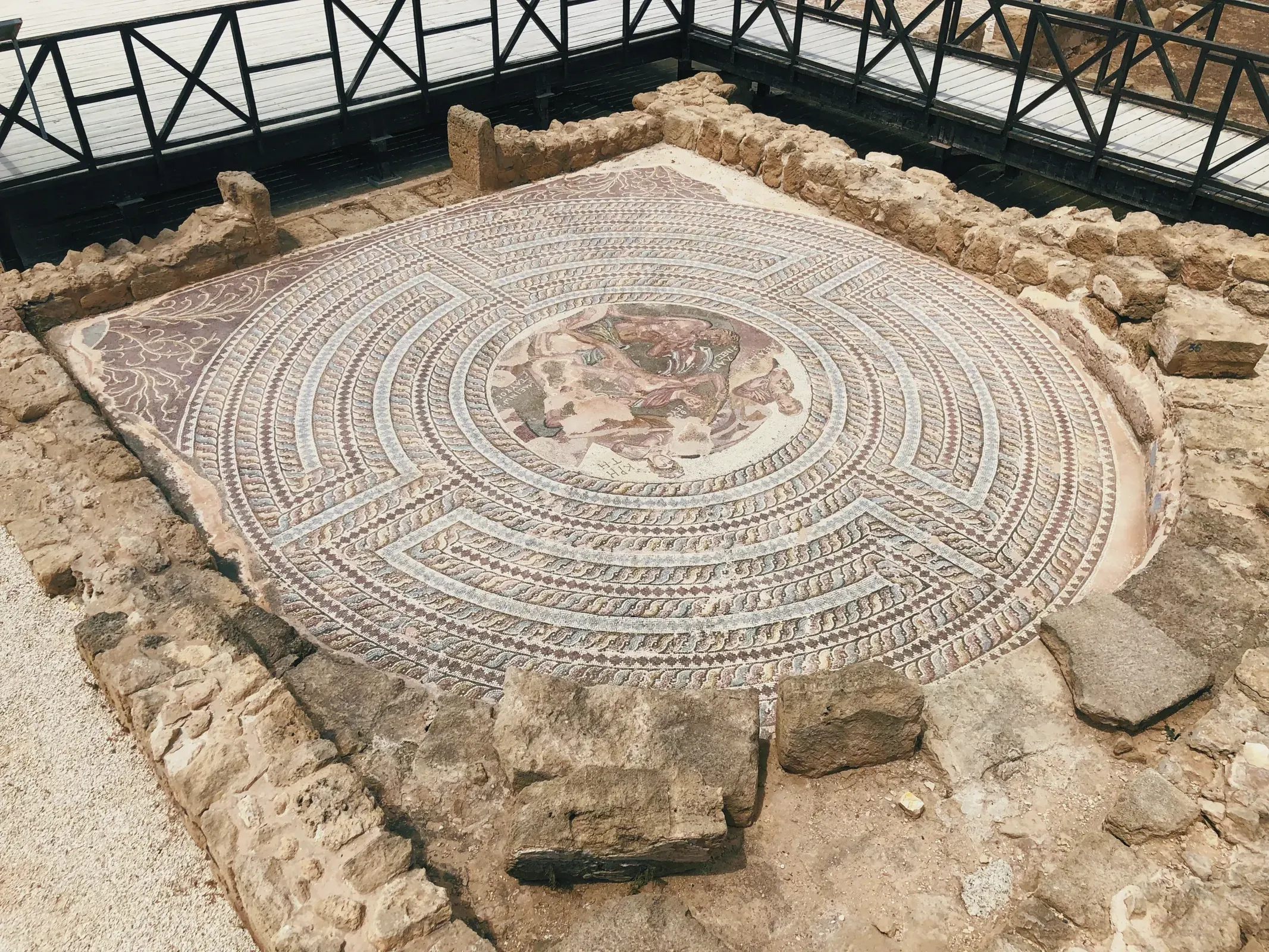
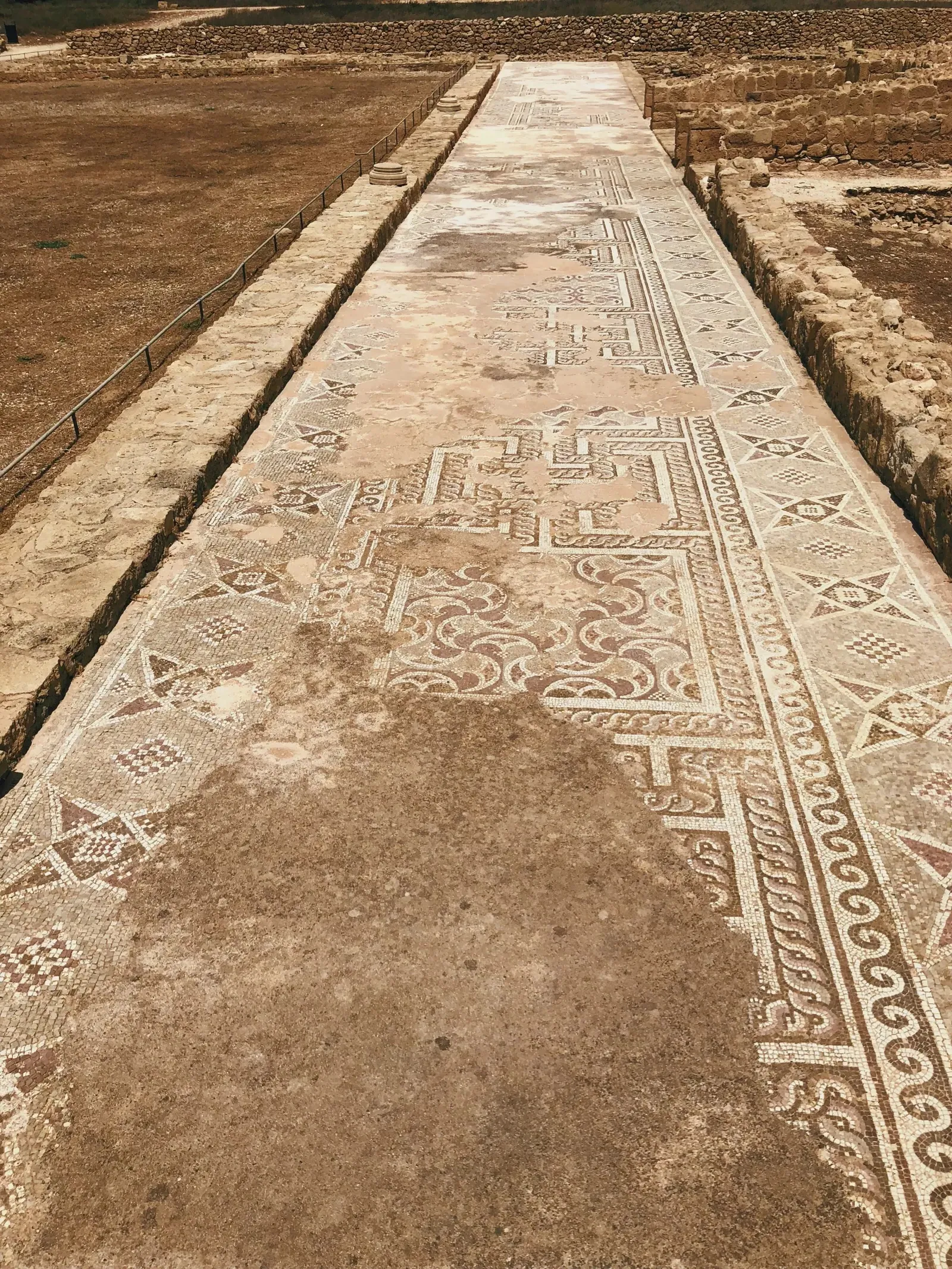
The Mosaics of Mythology
The true spectacle of Nea Paphos lies in its stunning collection of floor mosaics, renowned for their preservation and vivid depiction of Greek mythological scenes. These ancient artworks, found in the remains of villas and palaces, are celebrated as some of the most exceptional mosaics in the eastern Mediterranean, with their colors capturing the richness of ancient storytelling and artistry.
The Odeon and the Agora
The Pafos Odeon, an ancient limestone amphitheater, stands as a testament to the park’s historical significance. Carved into Fabrica Hill around the 2nd Century AD, this site has witnessed performances across centuries and continues to host cultural events, blurring the lines between the past and present. Nearby, the Agora, once the city’s bustling heart, reflects the grandeur of a bygone era with its surrounding porticoes and stately columns.
Sanctuary and Castle: The Asklepieion and Saranta Kolones
Not far from the Odeon, the Asklepieion reveals its past as a sanctuary dedicated to Asclepios, the god of medicine, showcasing a complex of rooms and courtyards that once served as a healing center. On the other hand, Saranta Kolones, with its evocative remnants, tells stories of a castle built to protect the city, its life cut short by an earthquake in 1223 AD.
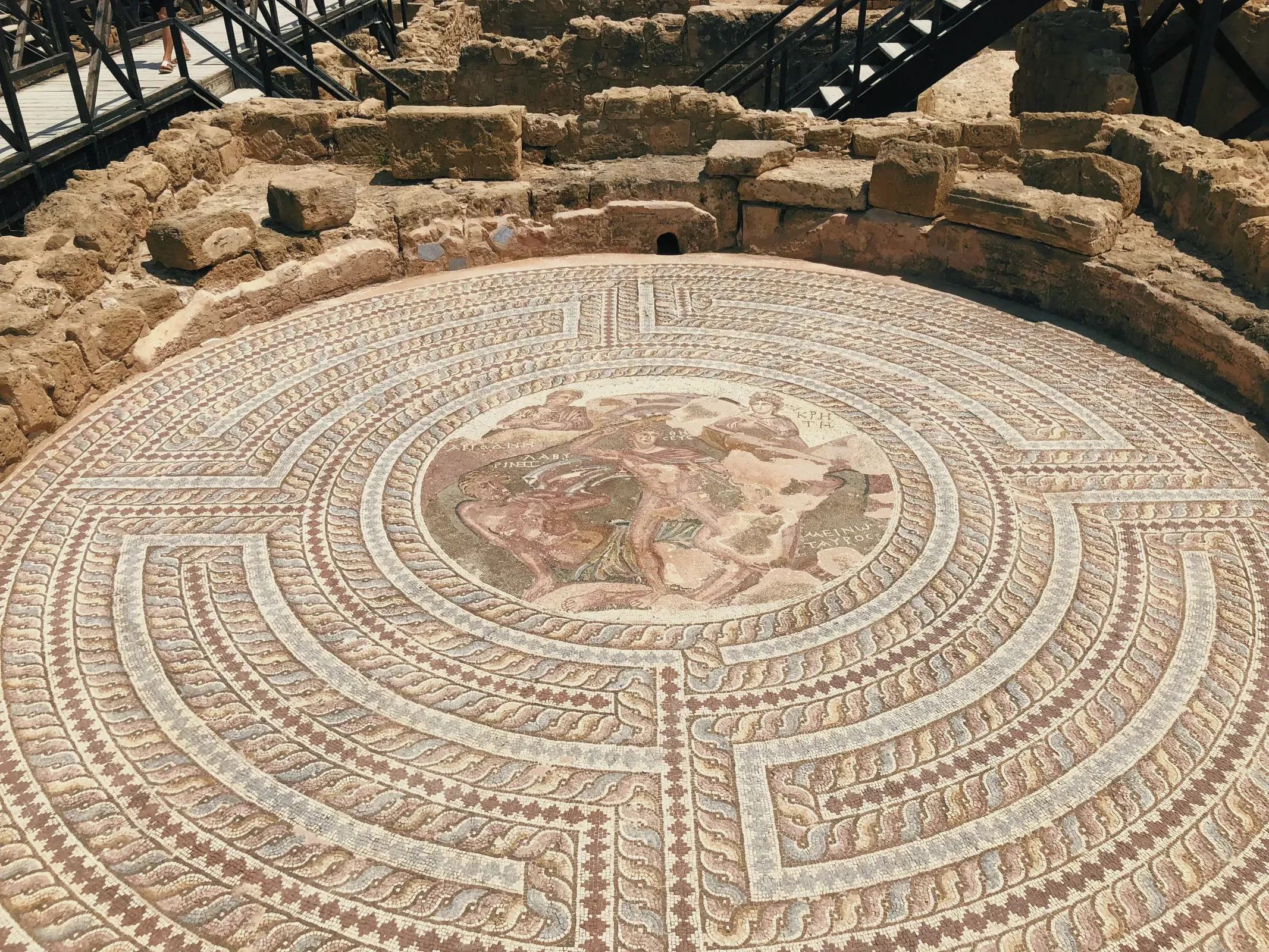

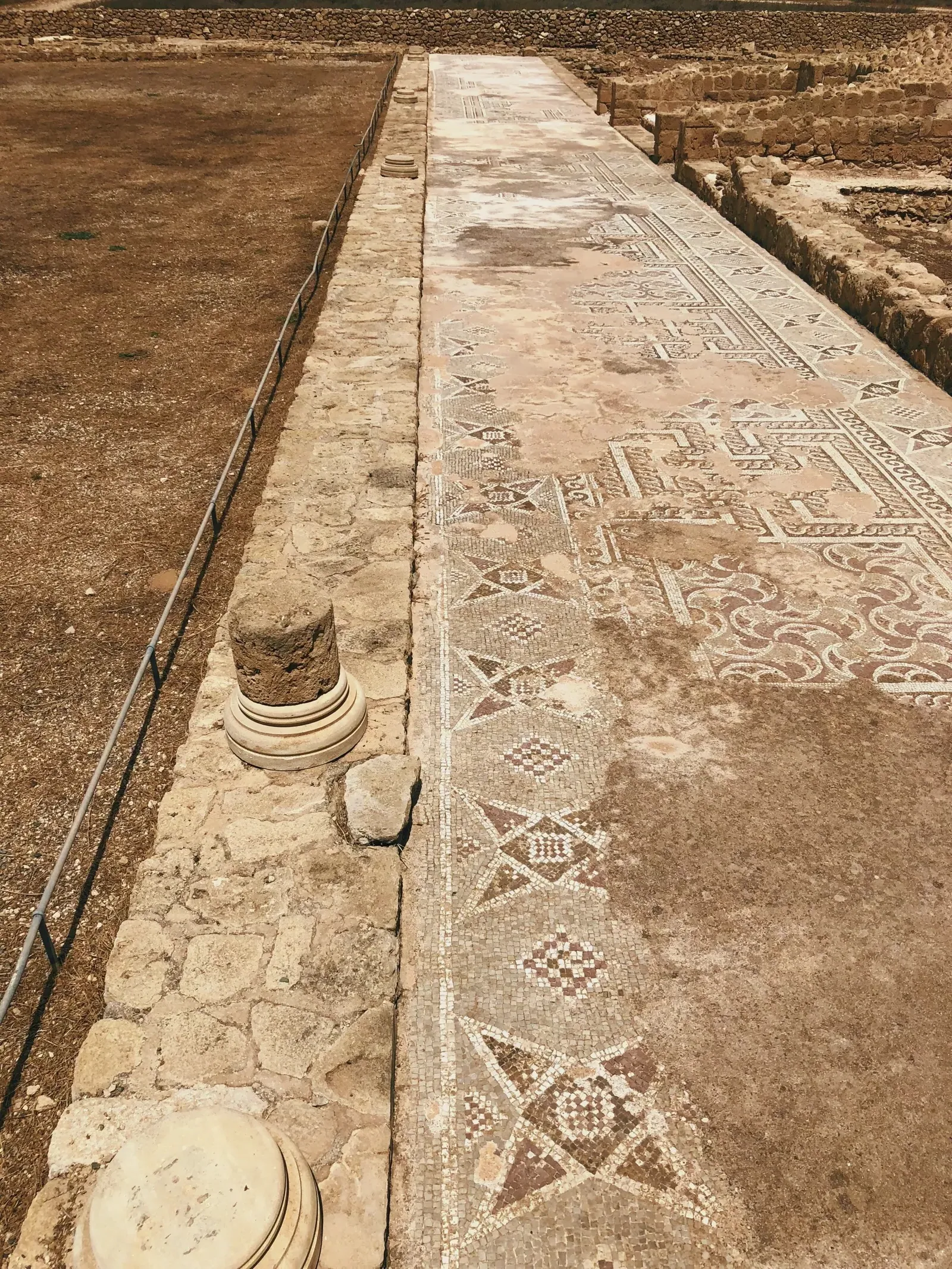
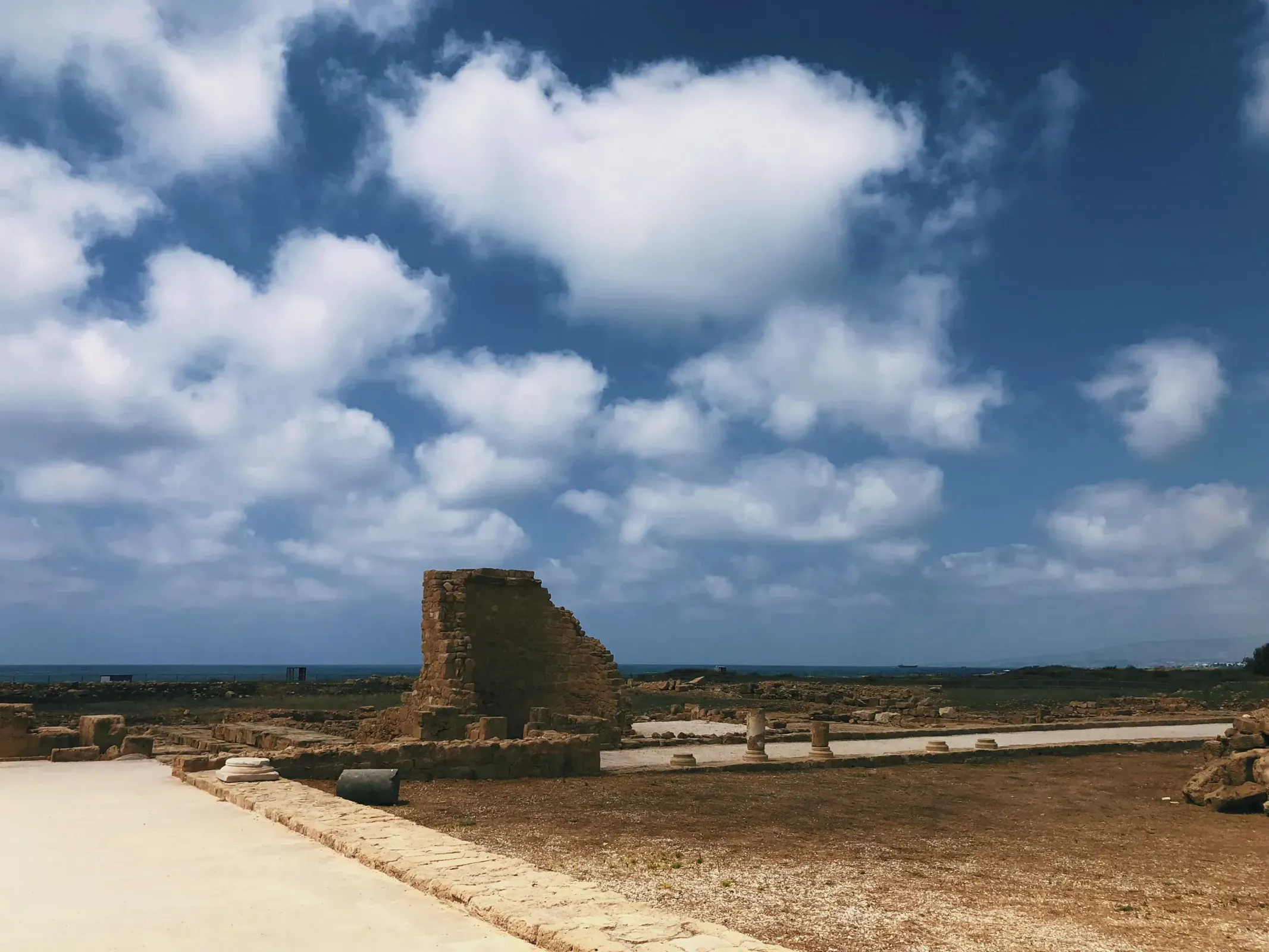
Landmarks of Nea Paphos
The Lighthouse: A Colonial Beacon
While the Pafos lighthouse, standing tall since its construction in 1888 under British rule, is a relatively modern addition, it serves as a beacon of history in its own right. Its light, visible for miles, marks the enduring legacy of Paphos as a crossroads of sea travel and cultural exchange.
Fortifications and Underground Wonders
The ancient city walls, dating back to the Roman period, once defended Nea Paphos from invaders. Although in ruins, their course through the city landscape reveals the strategic ingenuity of past inhabitants. Explorers can also delve into the subterranean marvel of Toumpallos, an underground complex thought to be linked to the god Apollo, further adding to the site’s mystique.
Homes of the Gods and Governors
The Grand House of Theseus
The House of Theseus, a palatial structure that once boasted over a hundred rooms, stands out with its remarkable mosaics. The house’s elaborate designs and extensive size point to its historical significance as the residence of the Roman governor of Cyprus.
Legacy of Dionysos
The House of Dionysos, named after the Greek god of wine, presents a striking array of mosaics that illustrate intricate hunting scenes and mythological tales. A protective shelter allows visitors to wander and marvel at the craftsmanship that has withstood the trials of time.
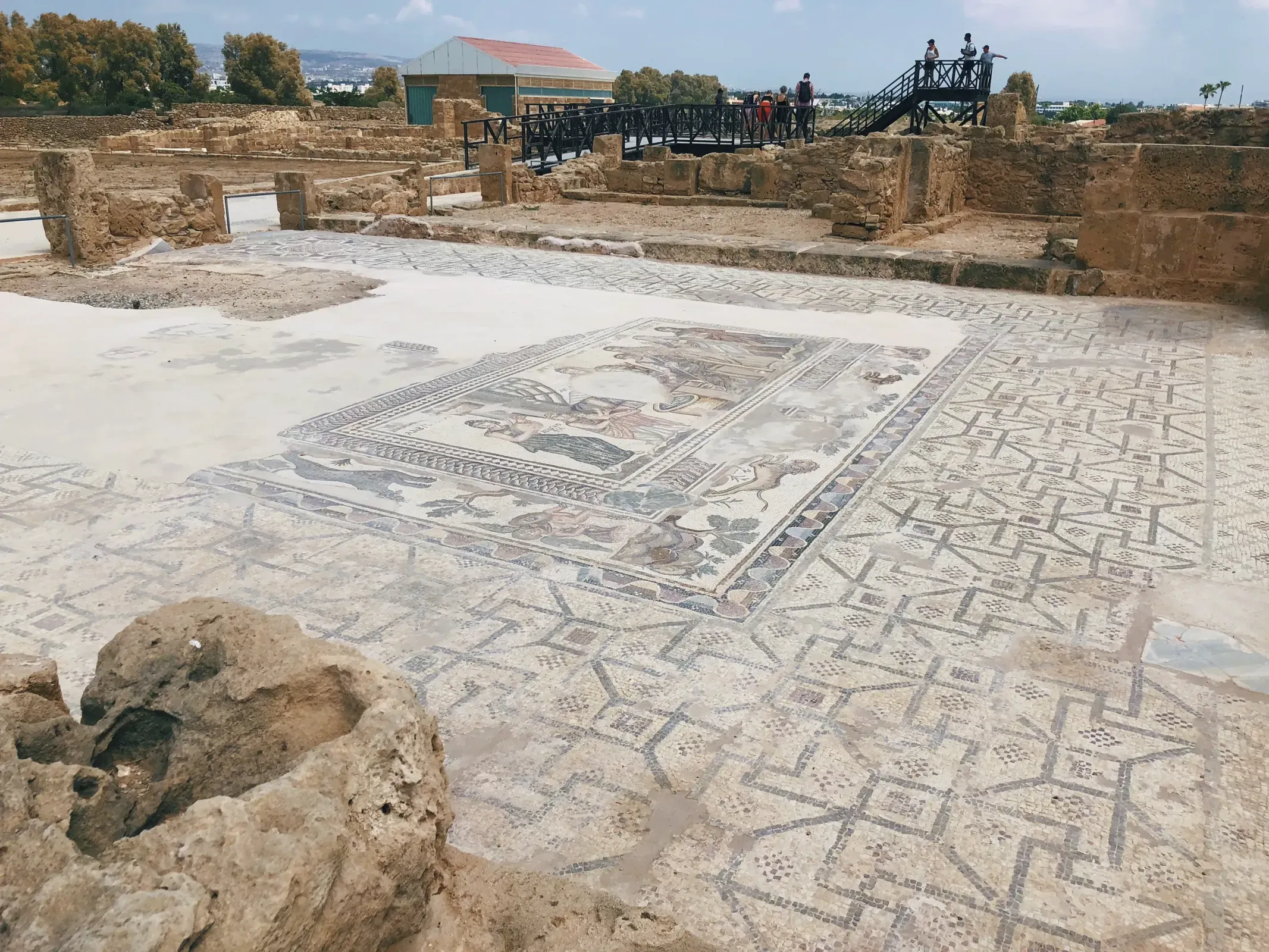
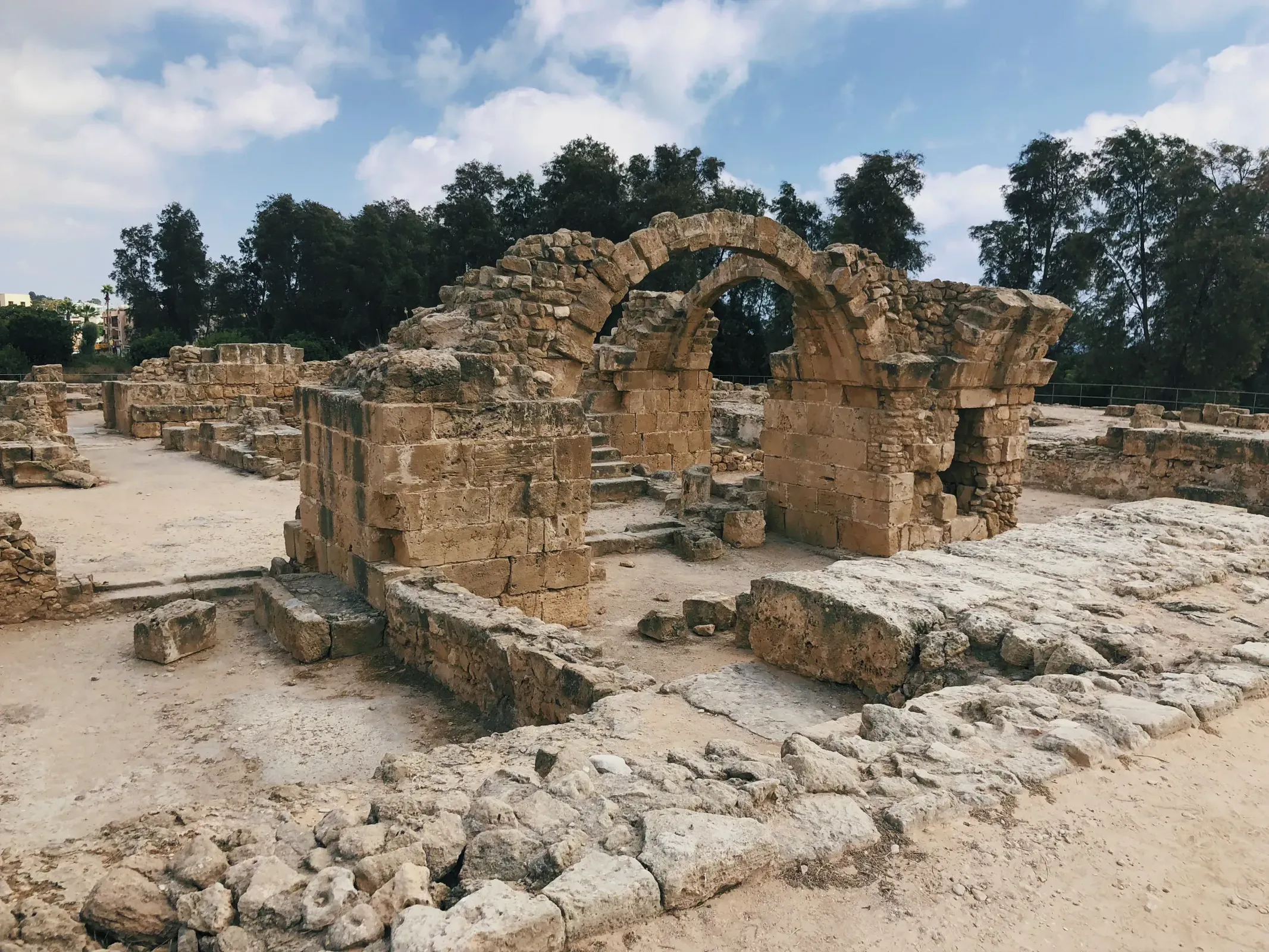

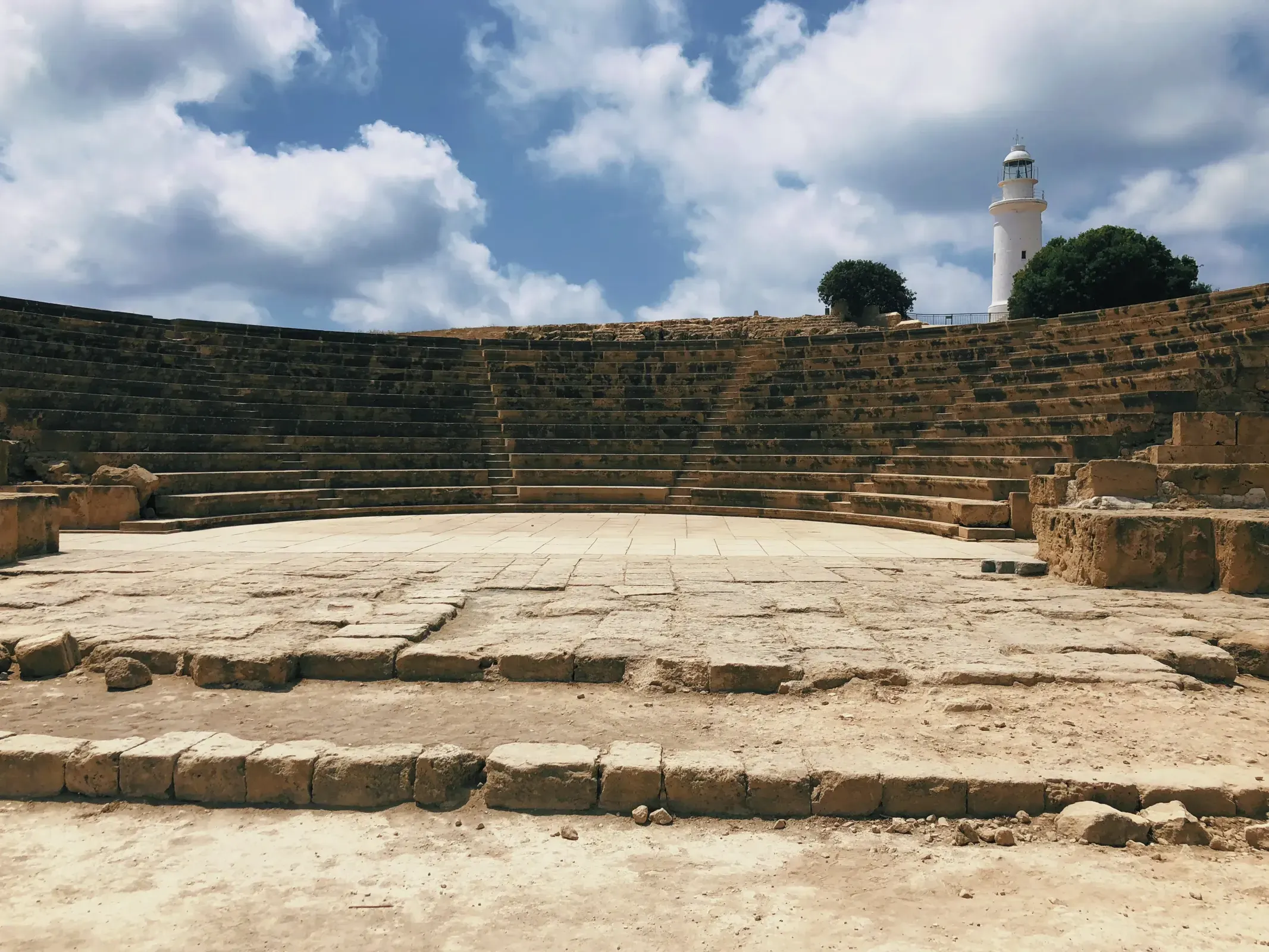
Preserving the Heritage of Paphos
The integrity and authenticity of Paphos are safeguarded through stringent protection and management frameworks. With the combined efforts of the Cypriot government and international organizations, conservation and preservation initiatives ensure that the Outstanding Universal Value of this historical marvel continues to be appreciated by future generations. The commitment to maintaining the site’s authenticity extends to the meticulous care of its mosaics and architectural remains, making Paphos an invaluable link to our shared human heritage.
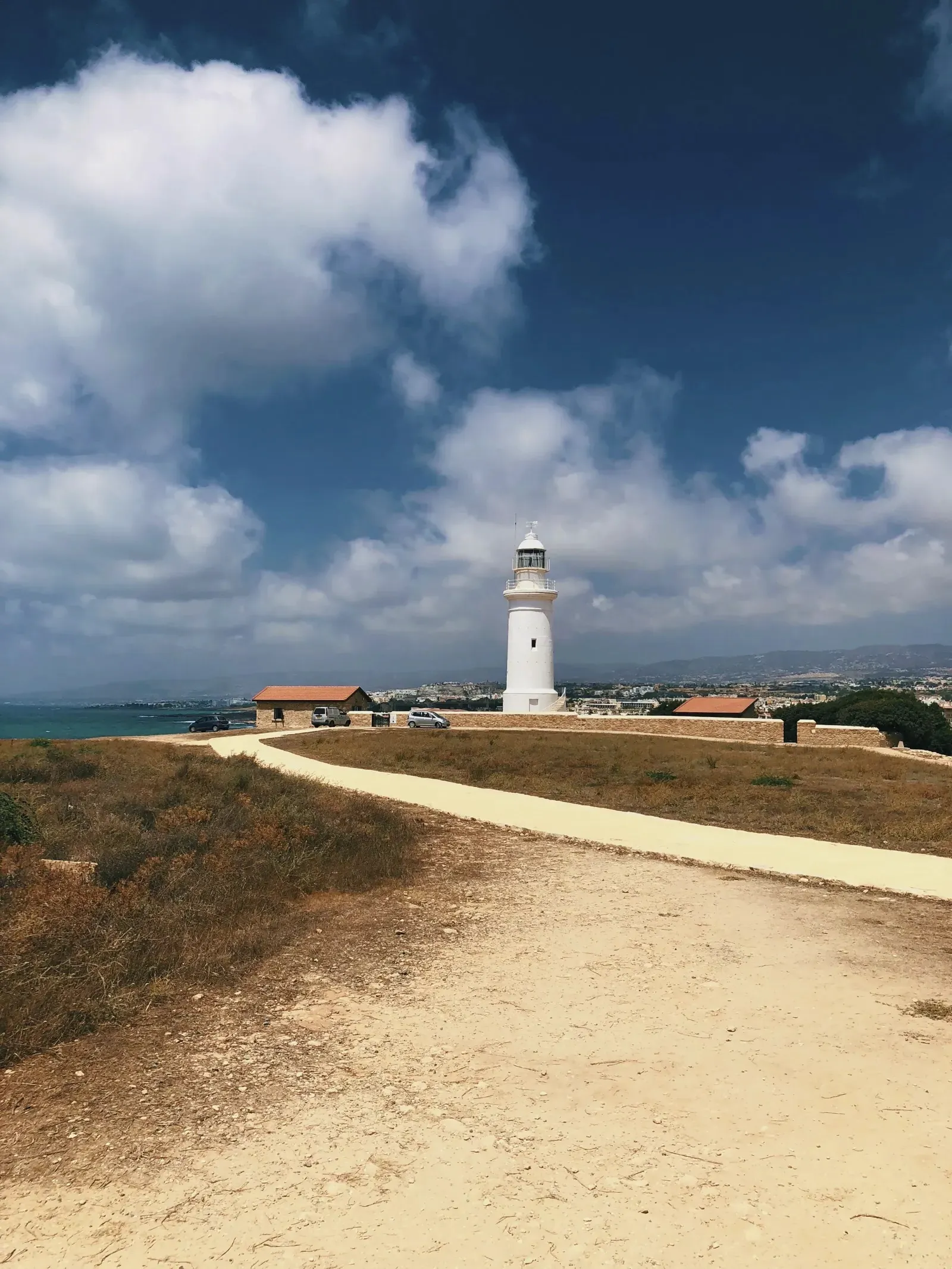
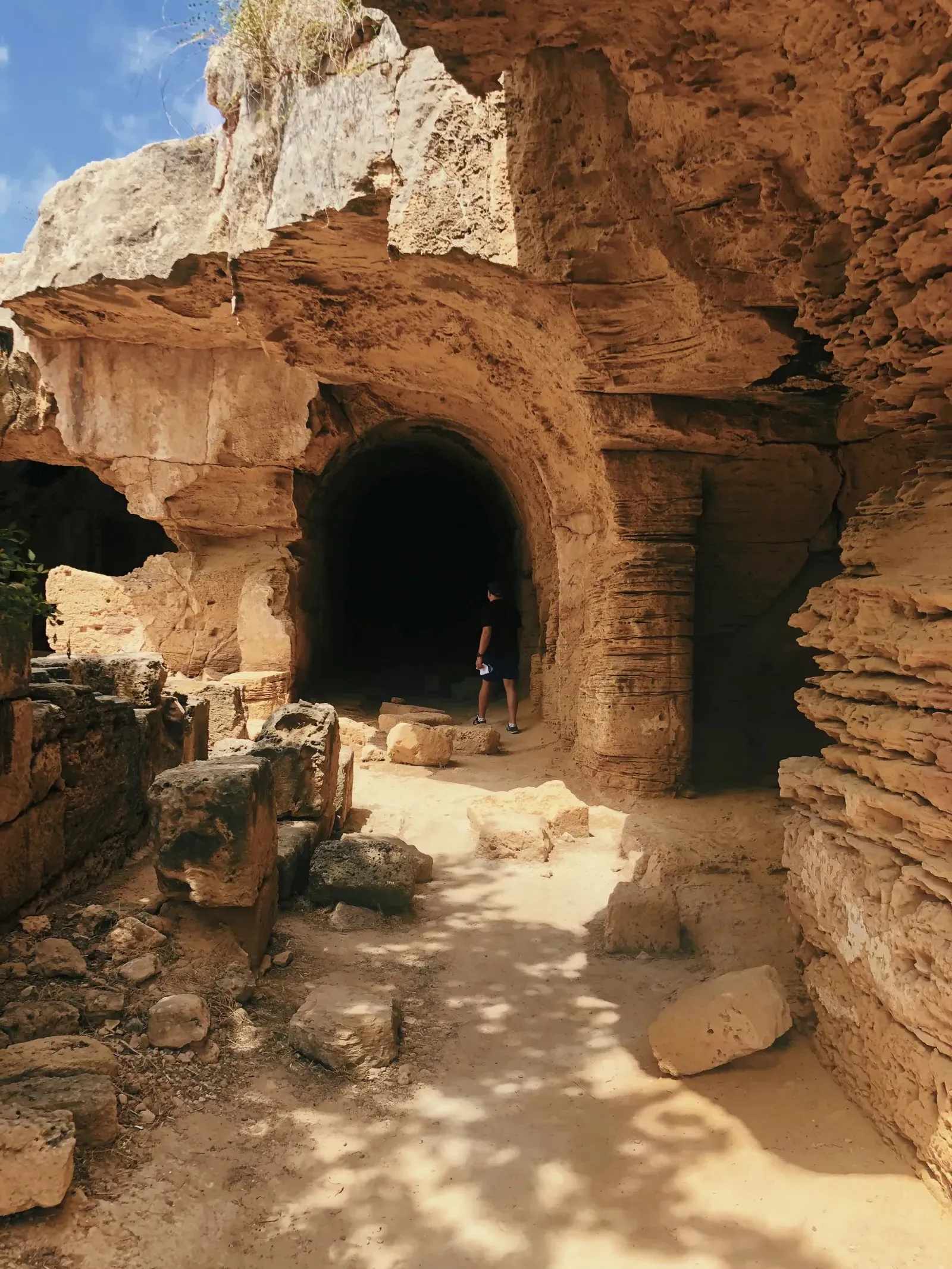
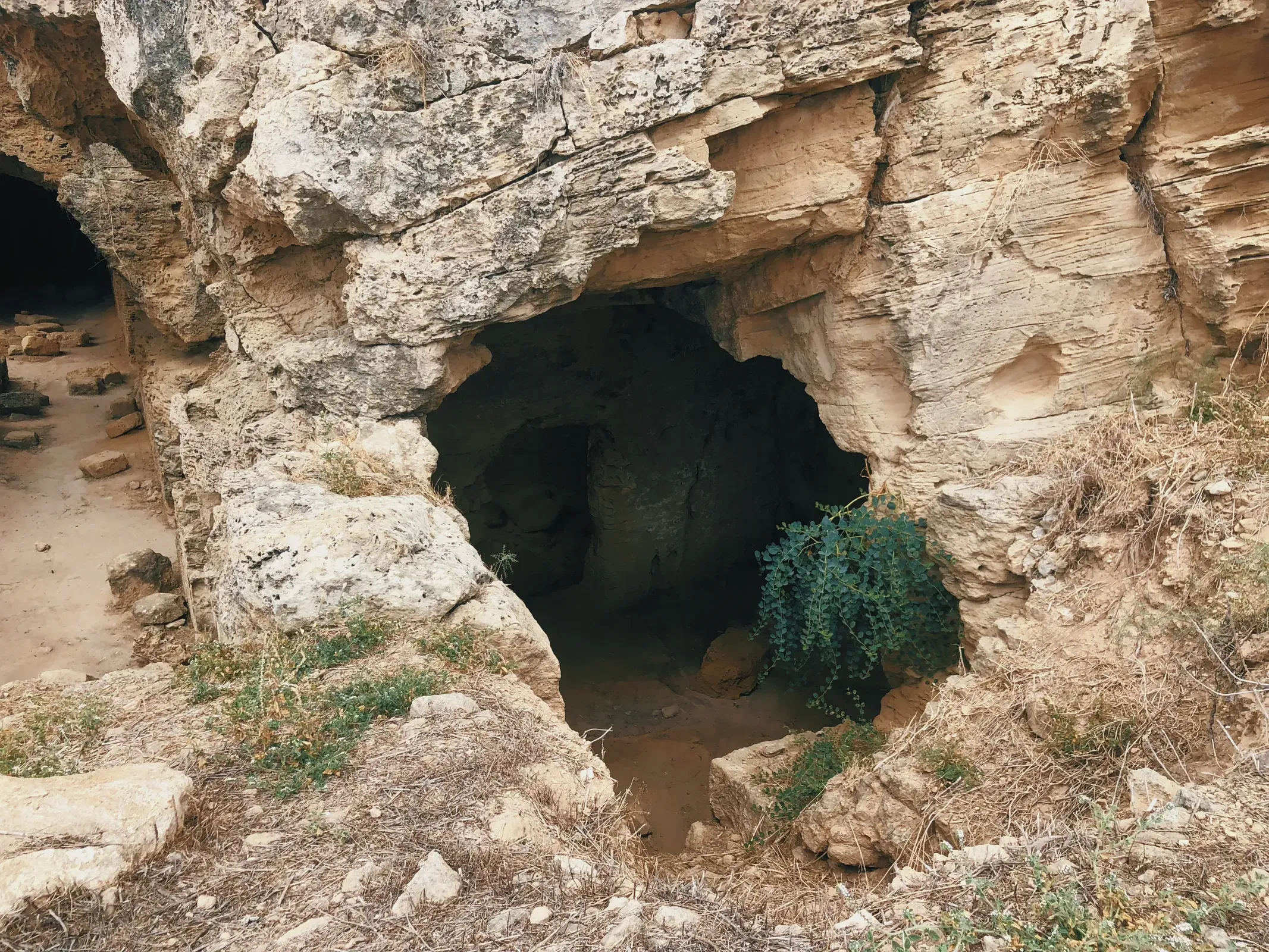
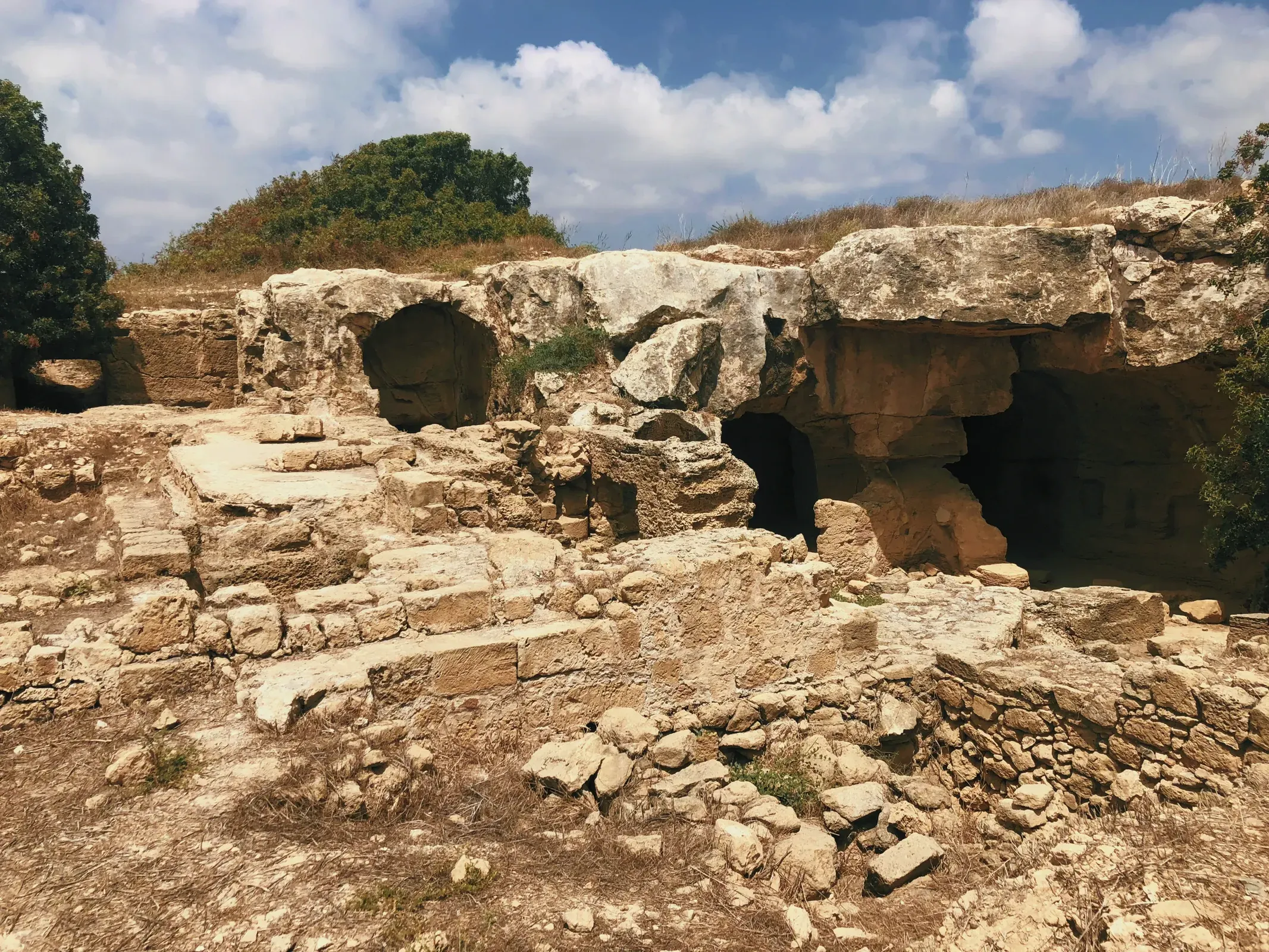
1. What can visitors expect to see at the Pafos Archaeological Park?
Visitors to the Pafos Archaeological Park can expect to see a variety of historical monuments tracing back to prehistoric times, stunning mosaics depicting Greek mythology, the ancient Pafos Odeon amphitheater, the Agora, the healing sanctuary of Asklepieion, and remnants of the Saranta Kolones castle. Additionally, the park houses the grand House of Theseus and the elaborate House of Dionysos, showcasing extensive mosaics. With ongoing preservation efforts, this UNESCO site remains a testament to Cyprus’s rich cultural heritage.
2. Is the Pafos Archaeological Park wheelchair accessible?
The Pafos Archaeological Park is partly accessible to wheelchairs, but visitors should note that the route is not marked. It is advisable to ask on-site staff for directions and assistance.
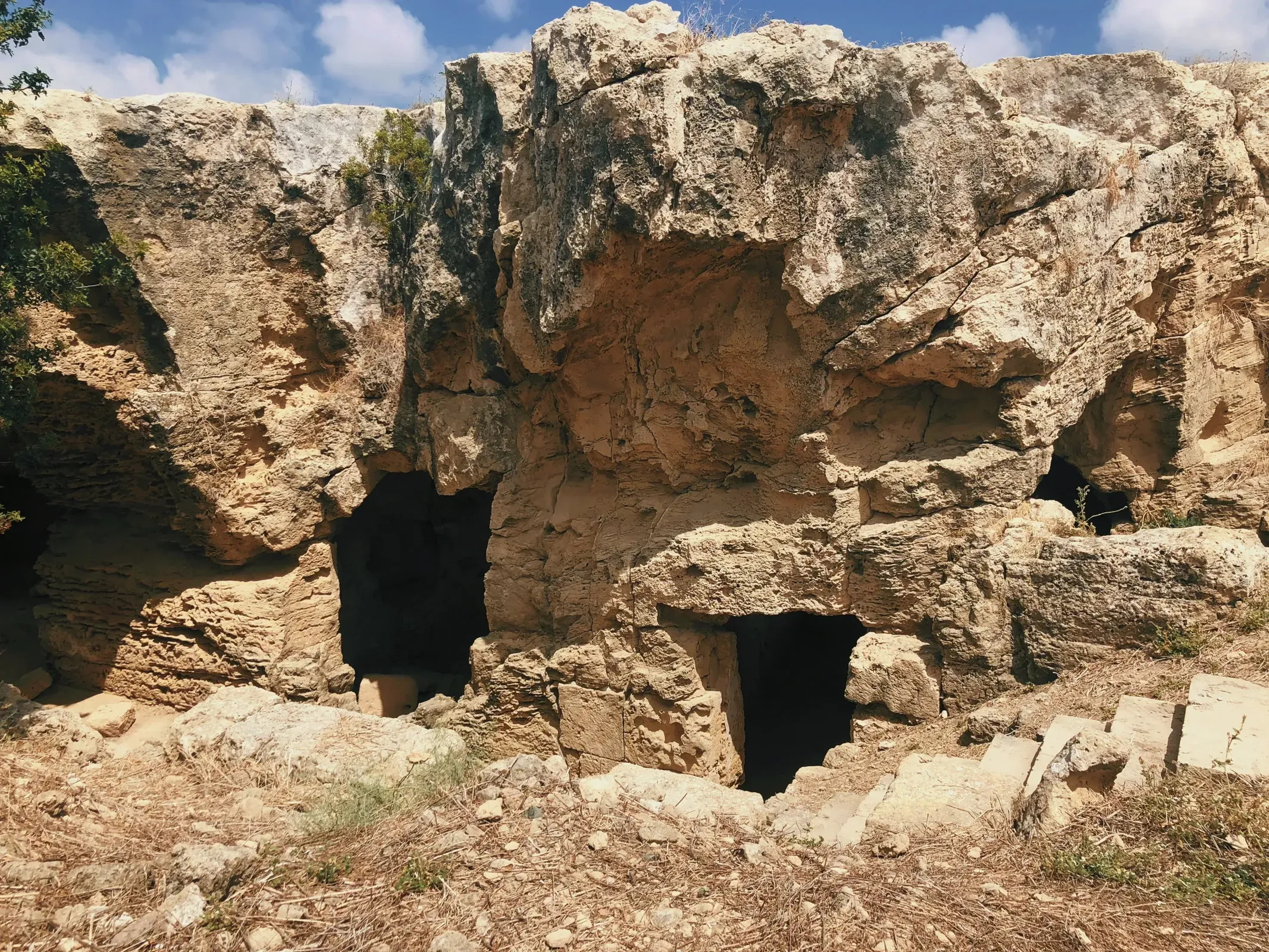
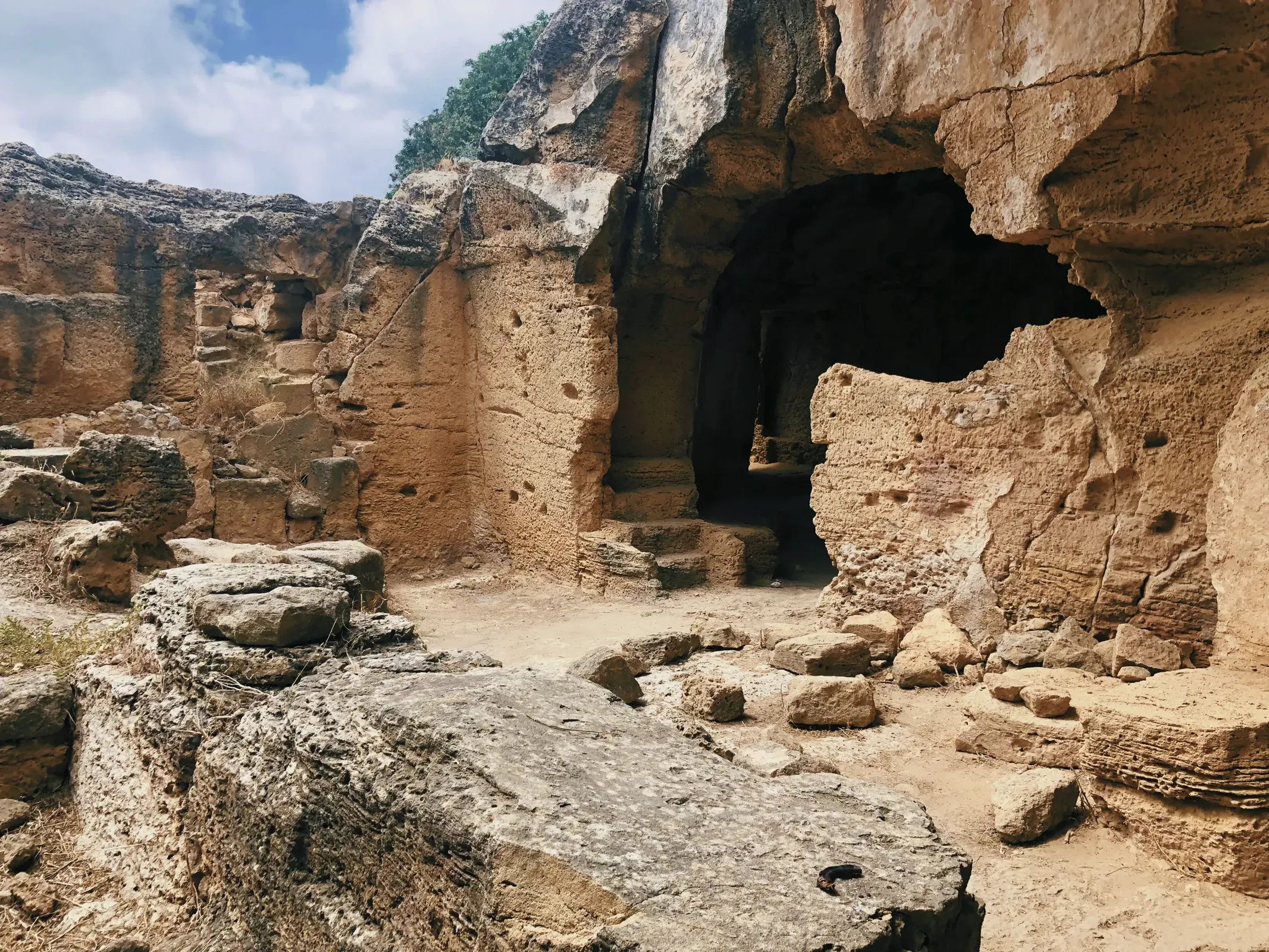

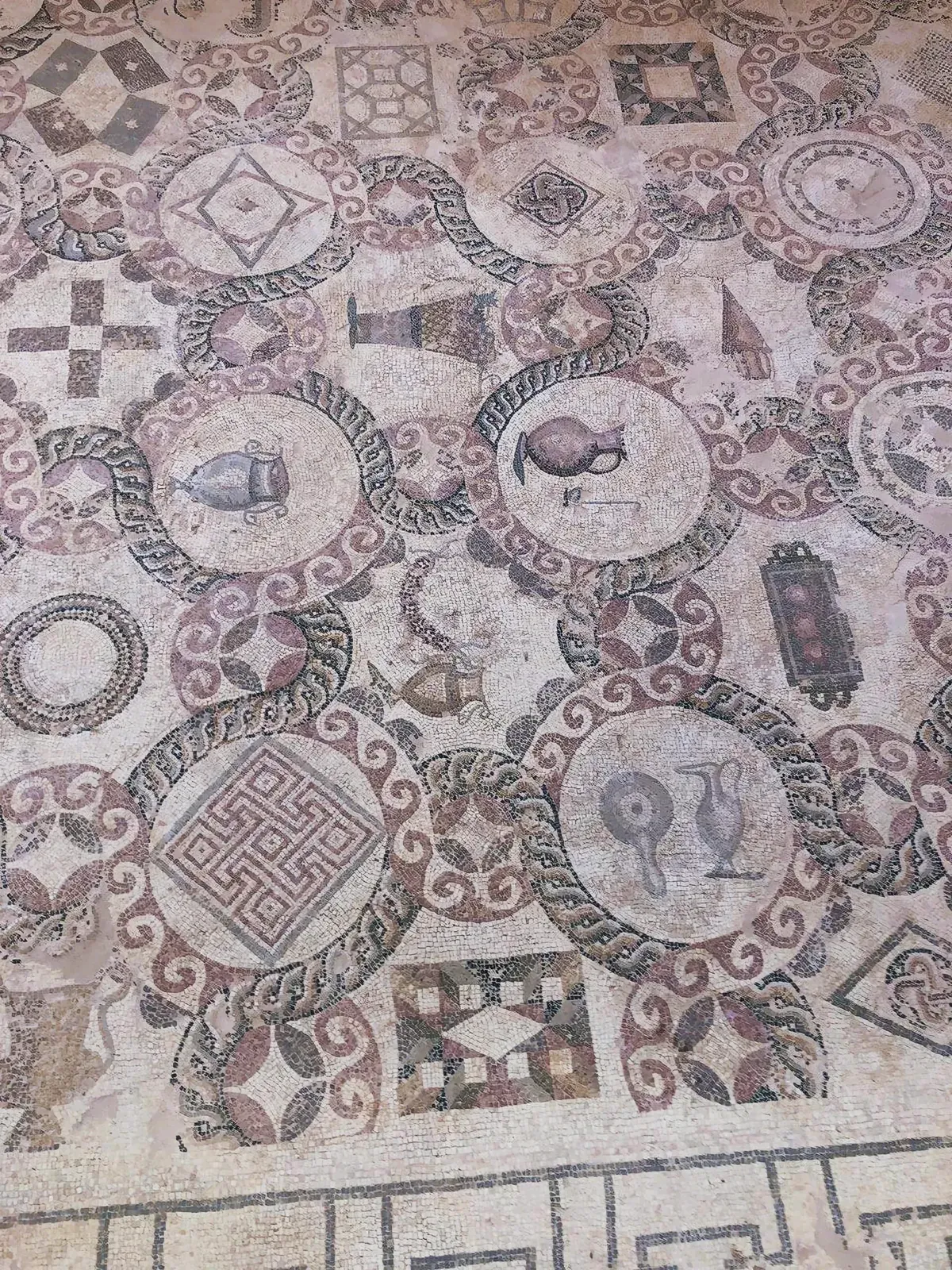
3. What are the opening hours and entrance fees for the Pafos Archaeological Park?
The opening hours of the Pafos Archaeological Park accommodate visitors year-round. However, it is always a good idea to confirm the current opening hours and any potential changes in entrance fees before planning a visit. As of now, the entrance fee is €4.50.
4. What are some other landmarks to explore in Nea Paphos?
In addition to the Pafos Archaeological Park, visitors can explore other landmarks in Nea Paphos. These include the Pafos Lighthouse, which stands as a colonial beacon and marks the enduring legacy of Paphos as a crossroads of sea travel and cultural exchange. The ancient city walls, dating back to the Roman period, offer insights into the strategic defenses of Nea Paphos. Explorers can also delve into the underground complex of Toumpallos, believed to be linked to the god Apollo.

